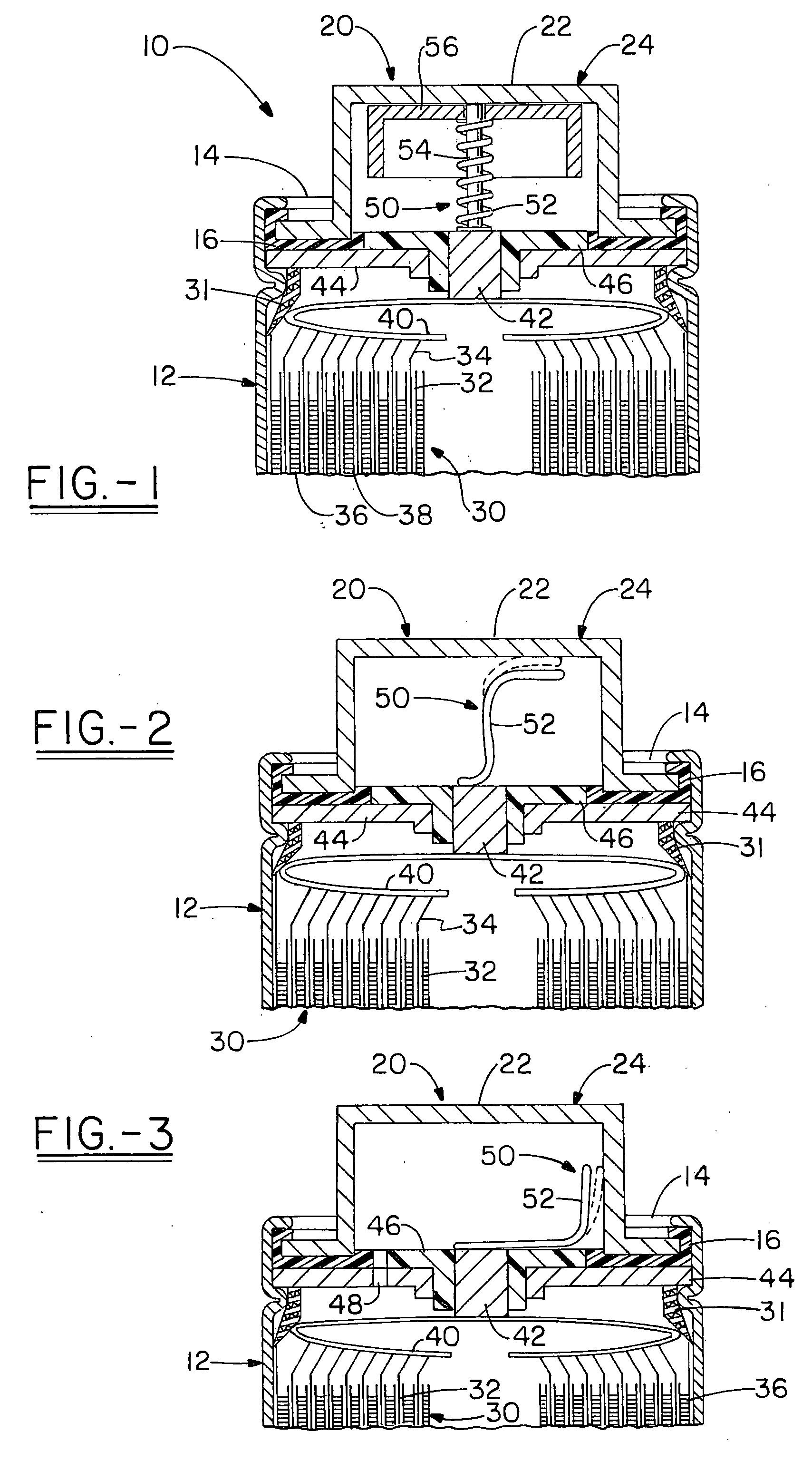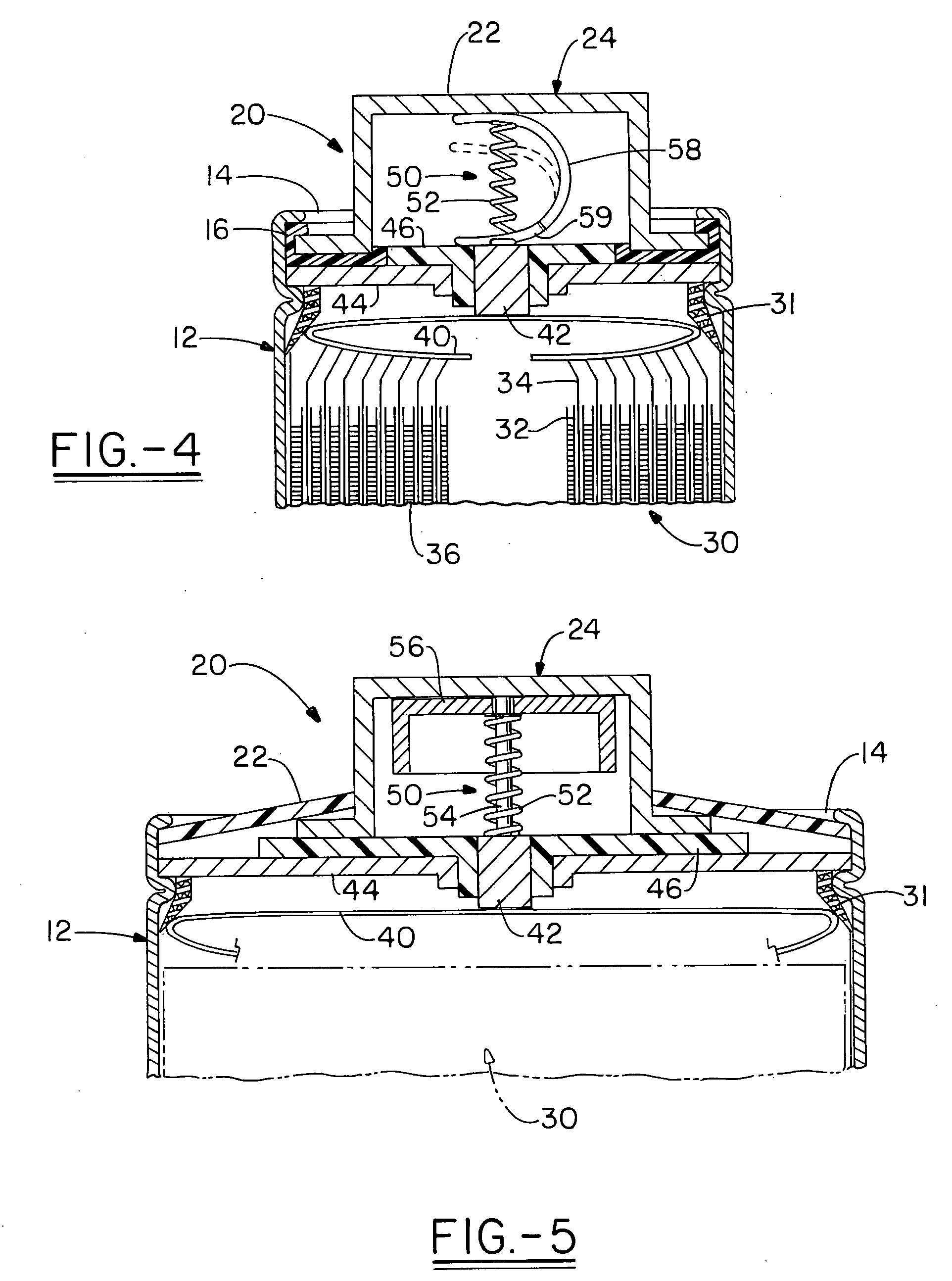Electrochemical cell with thermal current interrupting switch
a technology of electrical current and switch, which is applied in the maintenance/servicing of primary cells, nickel accumulators, batteries, etc., can solve the problems of internal short circuit, runaway exothermic reaction, and potentially dangerous conditions of energy they are capable of producing, and achieve the effect of preventing temperature or pressure levels
- Summary
- Abstract
- Description
- Claims
- Application Information
AI Technical Summary
Benefits of technology
Problems solved by technology
Method used
Image
Examples
Embodiment Construction
[0029]Electrochemical cells of the present invention include a current interrupting switch located within the cell casing which can include a container closed by an end assembly including a terminal cap with the switch being temperature responsive and part of an internal closed circuit or electrical path within the cell below an activating temperature and wherein at or above the activating temperature, the current interrupting switch is moved to an open position thereby opening, breaking, or otherwise interrupting the internal closed circuit or path within the cell thereby preventing current flow. The current interrupting switch is preferably capable of re-establishing the closed circuit or electrical path internally when the temperature in the cell and a switch member of the switch is below the activating temperature. In a preferred embodiment, the cell is a primary cylindrical Li / FeS2 AA or AAA cell (i.e., according to IEC nomenclature, FR06 and FR03, respectively speaking), such ...
PUM
 Login to View More
Login to View More Abstract
Description
Claims
Application Information
 Login to View More
Login to View More - R&D
- Intellectual Property
- Life Sciences
- Materials
- Tech Scout
- Unparalleled Data Quality
- Higher Quality Content
- 60% Fewer Hallucinations
Browse by: Latest US Patents, China's latest patents, Technical Efficacy Thesaurus, Application Domain, Technology Topic, Popular Technical Reports.
© 2025 PatSnap. All rights reserved.Legal|Privacy policy|Modern Slavery Act Transparency Statement|Sitemap|About US| Contact US: help@patsnap.com



